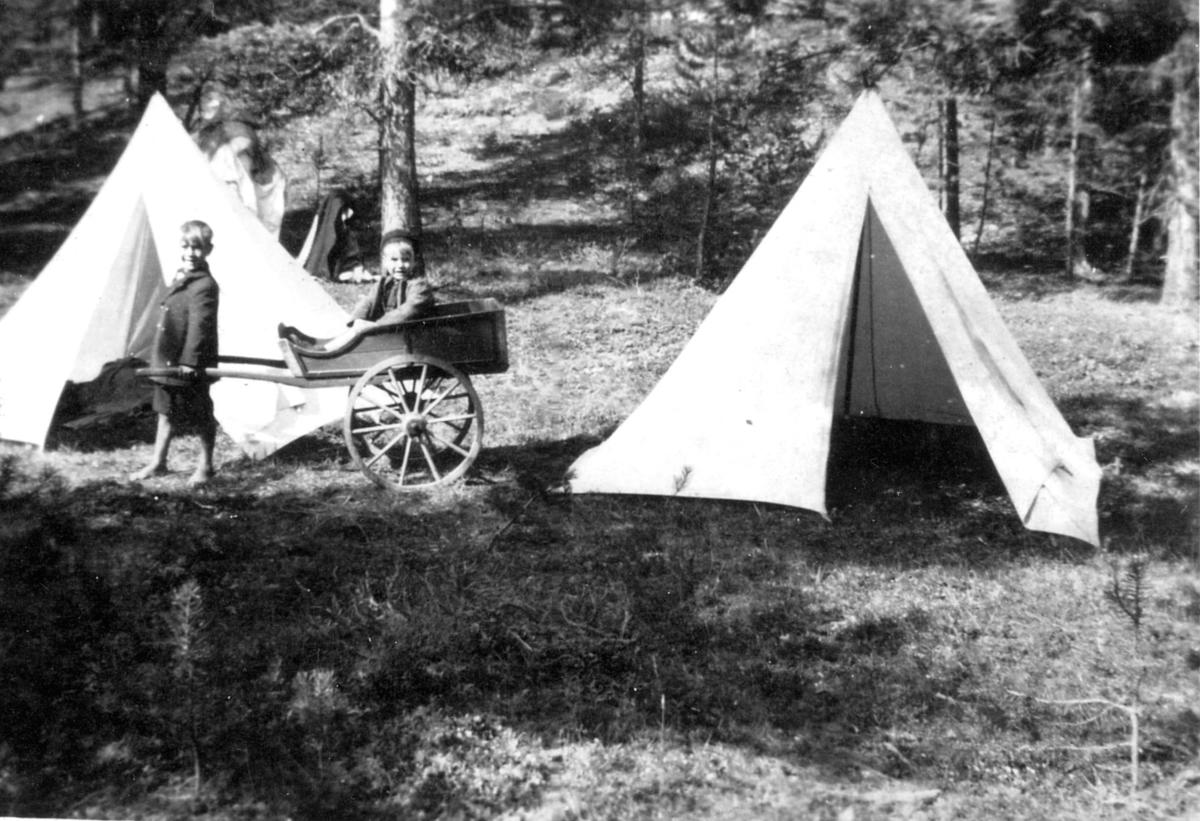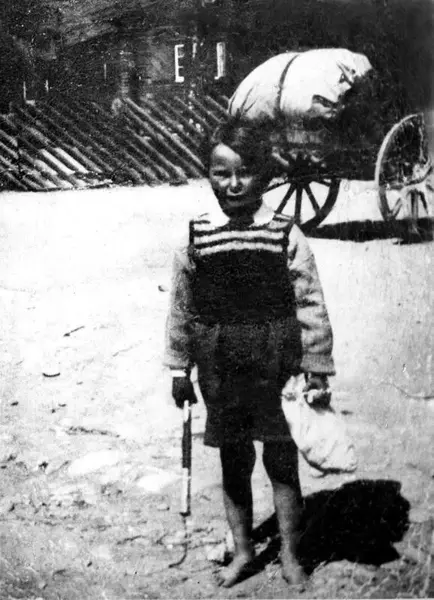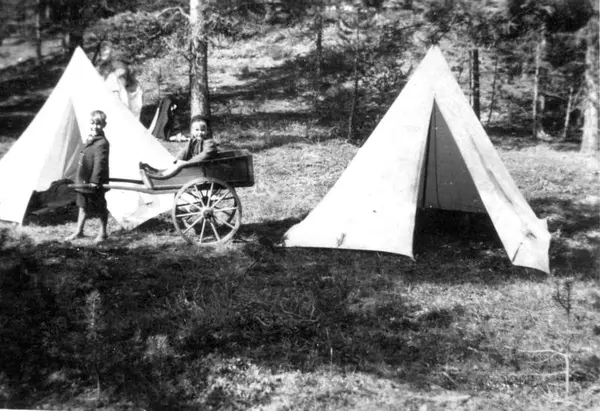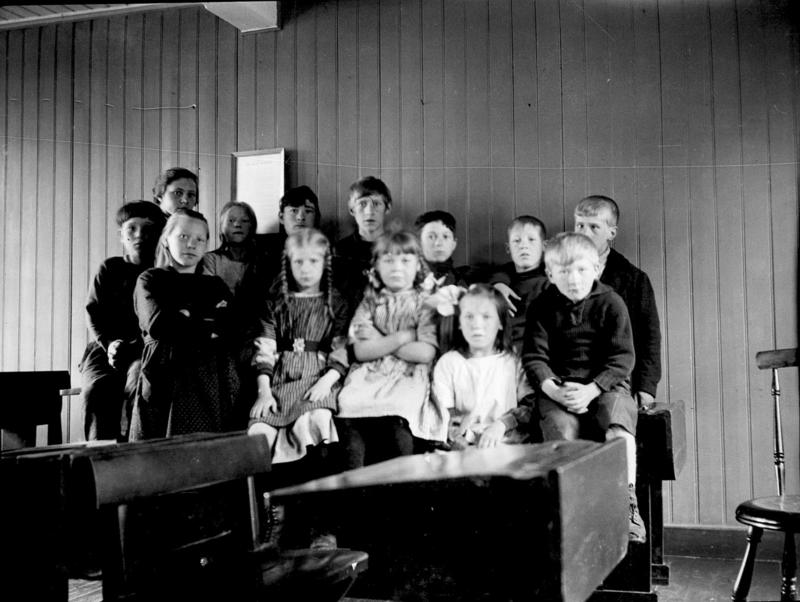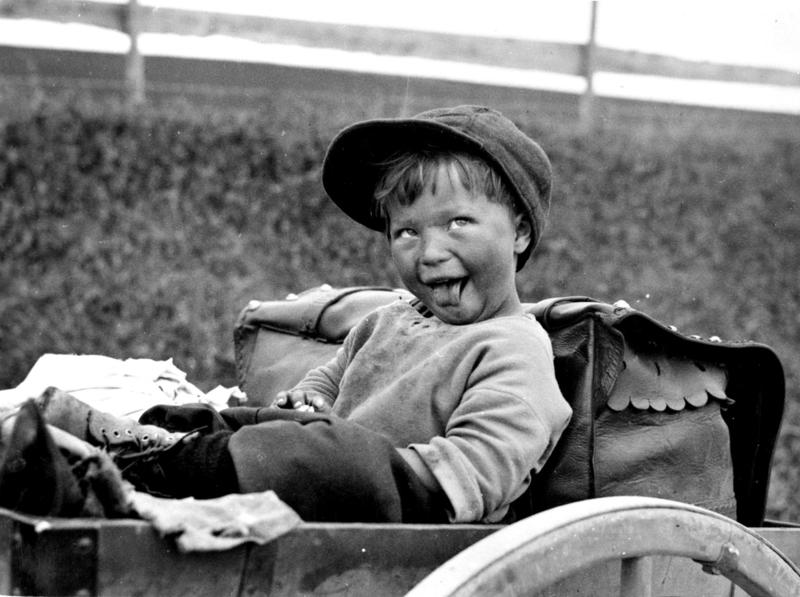In summer, the tent was always pitched near water. This provided opportunities for swimming and "sailing on logs". Traditional games such as "flipping sticks" and playing hide and seek were popular. The children were never allowed to play with cups and saucers. They had to stay away from the food stuff.
- 1/1
Frantz Johansen, ca. 5 years old. ca.1945. Foto: Privat / Anno Glomdalsmuseet
- 1/1
Children playing with handcart. Foto: Privat/ Anno Glomdalsmuseet
While the girls helped their mother with her daily chores, the boys helped their father. Bigger children looked after smaller siblings at the camp site when the mother was out on short trading trips. Although the father was often close to the tent, he was busy with his crafts. That is why it was the older siblings’ job to look after the younger ones.
When the whole family was out trading, the children's task was to "catch the door." The children ran ahead to the houses so that people would not have time to shut the door. It was more difficult for people to shut their doors when children came to the farm first.
